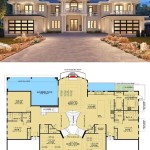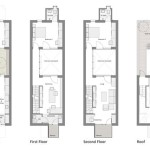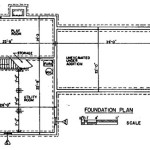DIY dog house plans guide individuals in constructing their own dog houses using readily available materials and tools. These detailed instructions empower pet owners to craft personalized and comfortable shelters for their canine companions, fostering a sense of ownership and satisfaction.
Whether it’s a cozy retreat for a small breed or a spacious shelter for a large dog, DIY dog house plans cater to diverse needs. By understanding the core principles of dog house construction, individuals can create practical and stylish structures that enhance their pet’s well-being.
In this article, we present a comprehensive guide to DIY dog house plans, covering essential considerations, step-by-step instructions, and tips for customizing your dog’s dream home.
When constructing your own dog house, several key considerations should be kept in mind to ensure the well-being and comfort of your furry friend:
- Appropriate size
- Durable materials
- Ventilation and insulation
- Protection from elements
- Ease of cleaning
- Comfort and coziness
- Aesthetic appeal
- Cost-effectiveness
- DIY feasibility
- Safety and security
These essential factors will guide you in selecting the most suitable DIY dog house plan for your pet and your specific needs.
Appropriate size
Determining the appropriate size for your dog house is crucial to ensure your pet’s comfort and well-being. A dog house that is too small will be cramped and uncomfortable, while one that is too large will be difficult for your dog to heat and may not provide a sense of security.
- Measure your dog’s height and length.
To determine the appropriate height of the dog house, measure your dog from the top of its head to the ground. Add 2-3 inches to this measurement to allow your dog to stand up comfortably inside the house. To determine the appropriate length of the dog house, measure your dog from the tip of its nose to the base of its tail. Add 4-6 inches to this measurement to allow your dog to stretch out comfortably.
- Consider your dog’s breed and weight.
Larger breeds of dogs will require larger dog houses, while smaller breeds will be more comfortable in smaller houses. You should also consider your dog’s weight when choosing a dog house. A heavier dog will need a more durable house that can withstand its weight.
- Think about how your dog uses the house.
If your dog only uses the house for sleeping, you can choose a smaller house. However, if your dog also uses the house for shelter from the elements, you will need to choose a larger house that provides more space for your dog to move around.
- Make sure the house is easy for your dog to enter and exit.
The entrance to the dog house should be large enough for your dog to enter and exit comfortably. The threshold should also be low enough that your dog can easily step over it.
By following these tips, you can choose the perfect size dog house for your pet.
Durable materials
When choosing materials for your DIY dog house, durability is key. The materials you choose should be able to withstand the elements and provide your dog with a safe and comfortable shelter. Here are a few things to consider when selecting durable materials for your dog house:
- Pressure-treated lumber
Pressure-treated lumber is a good choice for dog houses because it is resistant to rot and decay. It is also relatively inexpensive and easy to find at most hardware stores. However, it is important to note that pressure-treated lumber can contain chemicals that are harmful to dogs, so it is important to seal the wood before using it to build a dog house.
- Cedar
Cedar is a naturally rot-resistant wood that is also insect-repellent. It is a good choice for dog houses because it is durable and will last for many years. However, cedar can be more expensive than other types of wood.
- Redwood
Redwood is another naturally rot-resistant wood that is also insect-repellent. It is a good choice for dog houses because it is durable and will last for many years. Redwood is also relatively inexpensive and easy to find at most hardware stores.
- Plastic
Plastic is a good choice for dog houses because it is durable, waterproof, and easy to clean. However, plastic can be more expensive than other materials, and it can be difficult to find recycled plastic that is safe for dogs.
When choosing durable materials for your DIY dog house, it is important to consider your budget, the climate in your area, and the size and activity level of your dog.
Ventilation and insulation
Proper ventilation and insulation are essential for maintaining a comfortable and healthy environment inside your dog house. Ventilation helps to circulate fresh air and prevent the buildup of moisture, while insulation helps to regulate temperature and keep your dog warm in the winter and cool in the summer.
- Ventilation
Ventilation is important for preventing the buildup of moisture and stale air inside the dog house. This can help to prevent respiratory problems and other health issues for your dog. There are a few different ways to provide ventilation for your dog house, such as installing vents in the walls or roof, or using a raised floor to allow air to circulate underneath the house.
- Insulation
Insulation helps to regulate temperature inside the dog house, keeping your dog warm in the winter and cool in the summer. There are a few different types of insulation that you can use for your dog house, such as fiberglass batting, foam insulation, or straw. When choosing insulation, be sure to select a material that is safe for dogs and that will not absorb moisture.
By providing proper ventilation and insulation, you can help to ensure that your dog is comfortable and healthy in their new home.
Protection from elements
A well-built dog house should provide your dog with protection from the elements, including rain, wind, snow, and sun. Here are a few things to consider when designing and building a dog house that will protect your dog from the elements:
- Roof
The roof of the dog house should be sloped to allow water to drain off easily. It should also be made of a waterproof material, such as asphalt shingles, metal, or plastic. If you live in an area with heavy snowfall, you may want to consider a roof with a steep pitch to prevent snow from accumulating on the roof.
- Walls
The walls of the dog house should be made of a sturdy material, such as wood, plastic, or metal. The walls should also be insulated to help regulate temperature inside the dog house. If you live in a cold climate, you may want to consider adding a layer of weatherstripping around the edges of the walls to prevent drafts.
- Floor
The floor of the dog house should be raised off the ground to prevent moisture from seeping into the house. The floor should also be made of a durable material, such as concrete, wood, or plastic. If you live in a cold climate, you may want to consider adding a layer of insulation to the floor to help keep your dog warm.
- Door
The door of the dog house should be large enough for your dog to enter and exit comfortably. The door should also be made of a durable material, such as wood or plastic. If you live in a cold climate, you may want to consider adding a flap to the door to help keep the cold out.
By following these tips, you can build a dog house that will provide your dog with protection from the elements and keep them comfortable all year round.
Ease of cleaning
A clean dog house is essential for maintaining your dog’s health and well-being. A dirty dog house can harbor bacteria and parasites that can cause your dog to become sick. It is important to choose a dog house that is easy to clean and maintain.
- Materials
The materials used to build the dog house should be easy to clean and disinfect. Avoid using materials that are porous or absorbent, as these materials can harbor bacteria and parasites. Good choices for easy-to-clean materials include plastic, metal, and sealed wood.
- Design
The design of the dog house should make it easy to clean. The interior of the house should be free of sharp edges or corners where dirt and debris can accumulate. The floor of the house should be removable for easy cleaning. The door of the house should be large enough to allow you to easily reach inside to clean.
- Ventilation
Good ventilation is important for preventing the buildup of moisture and odors in the dog house. A well-ventilated dog house will be easier to clean and will help to keep your dog healthy.
- Regular cleaning
Regular cleaning is essential for maintaining a clean and healthy dog house. The frequency of cleaning will depend on how often your dog uses the house and how dirty it gets. A good rule of thumb is to clean the dog house at least once a week.
By following these tips, you can choose and maintain a dog house that is easy to clean and will help to keep your dog healthy and happy.
Comfort and coziness
Comfort and coziness are essential for your dog’s well-being. A comfortable and cozy dog house will provide your dog with a place to rest and relax, and will help to keep them warm in the winter and cool in the summer. There are a few things you can do to make your dog house more comfortable and cozy for your furry friend:
- Choose the right size dog house.
A dog house that is too small will be cramped and uncomfortable for your dog, while a dog house that is too large will be difficult for your dog to heat and may not provide a sense of security.
- Provide a soft and comfortable bed.
A soft and comfortable bed will provide your dog with a place to rest and relax. You can purchase a dog bed specifically designed for outdoor use, or you can use an old blanket or pillow.
- Add some insulation to the dog house.
Insulation will help to keep your dog warm in the winter and cool in the summer. You can use foam insulation, straw, or even old clothes to insulate the dog house.
- Provide some toys and treats.
Toys and treats will help to keep your dog entertained and comfortable in their new home. You can put a few of your dog’s favorite toys in the dog house, and you can also leave a few treats for them to find.
- Make sure the dog house is in a quiet and safe location.
Your dog will feel more comfortable and secure in their dog house if it is located in a quiet and safe place. Avoid placing the dog house in a high-traffic area or in a place where your dog will be exposed to the elements.
By following these tips, you can create a comfortable and cozy dog house that your furry friend will love. A comfortable and cozy dog house will provide your dog with a place to rest, relax, and feel safe.
Aesthetic appeal
The aesthetic appeal of your DIY dog house is important for two reasons. First, a well-designed dog house can enhance the look of your yard or home. Second, a dog house that is visually appealing to your dog can make them more likely to use it.
- Choose a design that complements your home.
If your home is traditional in style, you may want to choose a dog house with a classic design. If your home is more modern, you may want to choose a dog house with a more contemporary design. You can also find dog houses that are designed to look like miniature versions of real houses.
- Use colors that are both attractive and practical.
When choosing colors for your dog house, it is important to consider both the aesthetic appeal and the practicality of the colors. Dark colors will absorb more heat from the sun, which can make the dog house too hot for your dog in the summer. Light colors will reflect more heat from the sun, which can help to keep the dog house cool in the summer. You may also want to consider using colors that are resistant to fading and staining.
- Add personal touches to the dog house.
You can add personal touches to the dog house to make it more unique and special for your dog. For example, you can paint the dog house your dog’s favorite color, or you can add your dog’s name or initials to the dog house. You can also add decorative elements to the dog house, such as trim, molding, or window boxes.
- Consider the size and scale of the dog house.
The size and scale of the dog house should be in proportion to the size of your dog and the size of your yard. A dog house that is too large will look out of place in a small yard, and a dog house that is too small will not be comfortable for your dog. When choosing a size for the dog house, be sure to consider the height, length, and width of your dog.
By following these tips, you can choose a DIY dog house that is both aesthetically appealing and functional for your dog.
Cost-effectiveness
One of the main benefits of building your own dog house is that it is a cost-effective way to provide your dog with a comfortable and safe place to sleep and relax. Commercial dog houses can be expensive, especially if you want a house that is made from high-quality materials and is large enough to accommodate your dog comfortably. By building your own dog house, you can save money on materials and labor costs.
The cost of building a dog house will vary depending on the size of the house, the materials you use, and the complexity of the design. However, even a large dog house made from high-quality materials can be built for a fraction of the cost of a commercial dog house. For example, a simple dog house made from wood and plywood can be built for around $100, while a more elaborate dog house made from cedar or redwood can be built for around $200-$300.
In addition to saving money on materials and labor costs, building your own dog house also allows you to customize the house to your dog’s specific needs. For example, you can build a house that is the perfect size for your dog, and you can choose materials that are durable and easy to clean. You can also add features to the house that your dog will enjoy, such as a raised floor or a built-in bed.
Overall, building your own dog house is a cost-effective way to provide your dog with a comfortable and safe place to sleep and relax. By using high-quality materials and following a simple design, you can build a dog house that will last for many years.
Here are some tips for building a cost-effective dog house:
- Use recycled materials.
You can save money on materials by using recycled materials to build your dog house. For example, you can use scrap wood from a construction project, or you can use old pallets to build the walls of the house. You can also find free or low-cost materials at your local hardware store or home improvement center.
- Build a simple design.
The more complex the design of the dog house, the more expensive it will be to build. Stick to a simple design that is easy to construct and that uses inexpensive materials.
- Do the work yourself.
If you are able to do the work yourself, you can save a significant amount of money on labor costs. However, if you are not comfortable building the dog house yourself, you can hire a handyman or a contractor to do the work for you.
DIY feasibility
DIY feasibility refers to the practicality and ease of constructing a project, in this case, a dog house, without professional assistance or specialized skills. When assessing DIY feasibility for dog house plans, consider factors such as the complexity of the design, availability of materials and tools, and your own skill level and experience in woodworking or home improvement projects.
For beginners, simple dog house plans that utilize basic construction techniques and common materials like plywood, wood panels, and roofing felt are recommended. These plans typically involve straightforward assembly and minimal cutting and shaping, making them suitable for those with limited experience in DIY projects. Detailed instructions and diagrams included in the plans further enhance the ease of construction.
As skill level and confidence grow, DIY enthusiasts may opt for more elaborate dog house plans that incorporate advanced features such as insulation, raised flooring, and decorative elements. These plans often require more precise cutting, joinery techniques, and the use of specialized tools. Careful planning, attention to detail, and a willingness to learn new skills become increasingly important for successful execution.
Regardless of skill level, thoroughly reviewing the dog house plans, gathering necessary materials, and preparing the workspace are crucial for successful construction. Clear and comprehensive instructions, along with helpful tips and troubleshooting advice included in the plans, can greatly enhance the DIY feasibility and ensure a satisfying outcome.
Ultimately, DIY feasibility for dog house plans depends on the individual’s skills, available resources, and willingness to invest time and effort in the project. With careful planning, a suitable design, and a commitment to following instructions, building a comfortable and stylish dog house can be a rewarding and achievable DIY endeavor.
Safety and security
Ensuring the safety and security of your dog is paramount when designing and constructing a DIY dog house. Several key considerations should be taken into account to minimize risks and provide a secure haven for your furry companion.
Structural integrity
The dog house must be structurally sound to withstand various weather conditions and provide protection from potential hazards. Use sturdy materials such as pressure-treated wood or durable plastics that can endure strong winds, heavy rain, and extreme temperatures. Ensure proper framing and secure all joints to prevent collapse or damage.
Non-toxic materials
Choose materials that are non-toxic and safe for your dog. Avoid using treated wood or materials that may release harmful chemicals or fumes. Opt for natural materials like untreated wood, bamboo, or pet-friendly plastics that pose no health risks to your dog.
Secure door and ventilation
Provide a secure and well-ventilated door that allows your dog to enter and exit comfortably. Ensure the door is large enough for your dog’s size and has a sturdy latch or lock to prevent accidental openings. Ventilation is crucial to maintain proper airflow and prevent moisture buildup, which can lead to mold or mildew growth.
By incorporating these safety and security measures into your DIY dog house plans, you can create a secure and comfortable space for your beloved companion.










Related Posts








